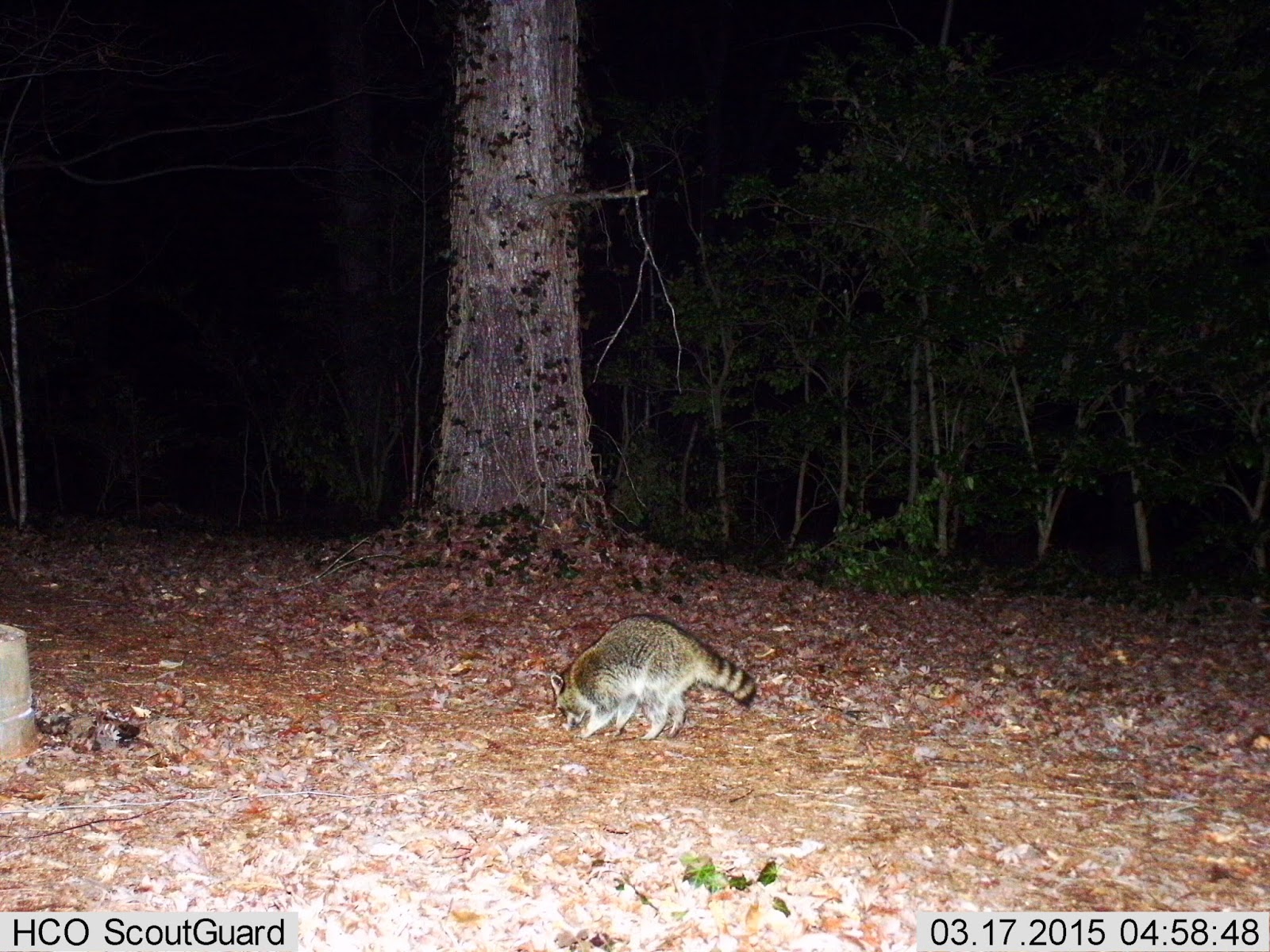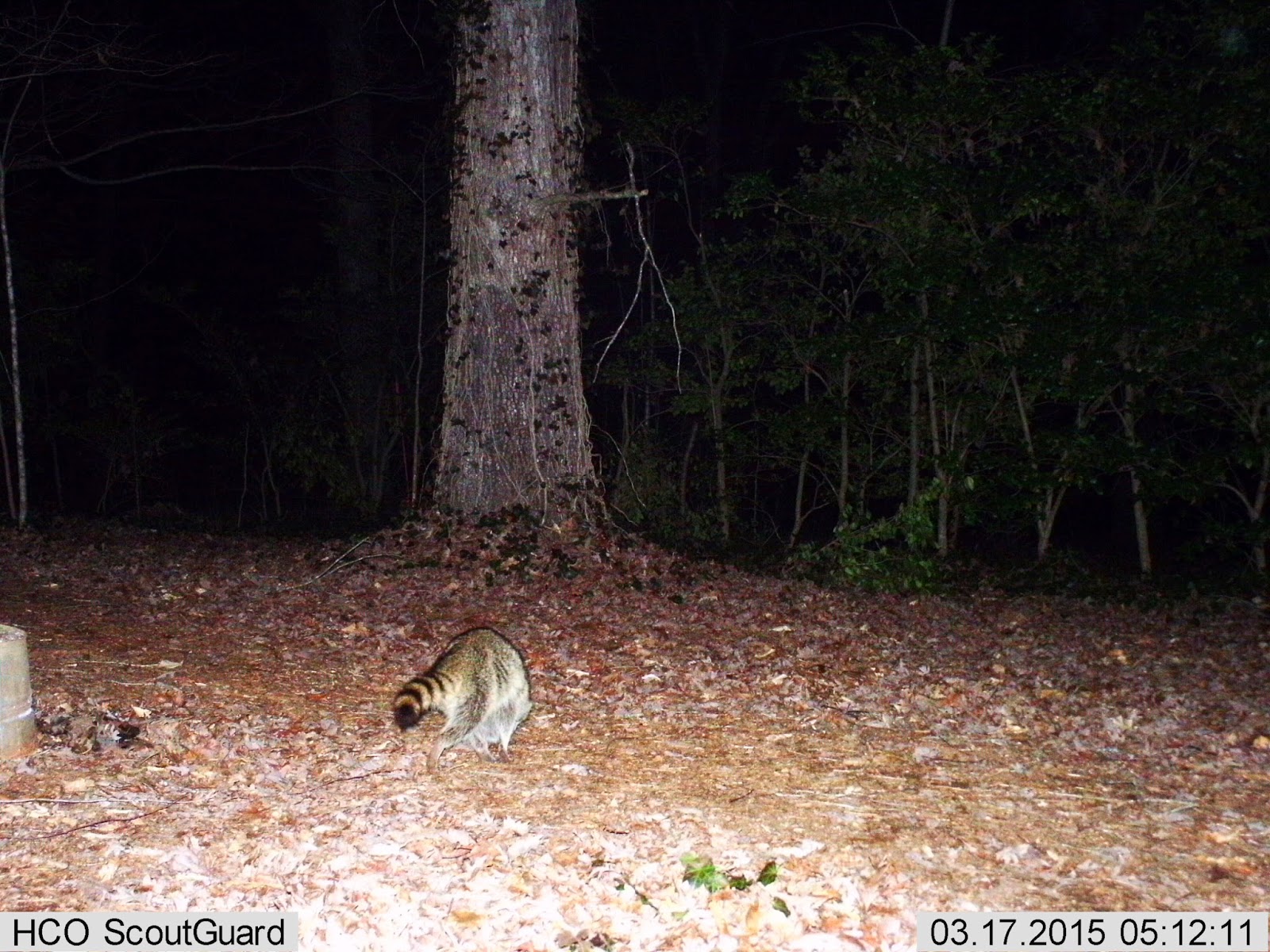After wearing out my wife's little Lumix DMC-FS15 camera over the past two and a half years, I took the plunge and bought a little larger camera with zoom capability. It arrived two days ago. Here are some of the first birds that I photographed at our feeders.
Yellow-rumped Warbler
As we watched the feeders this winter, we did not see our first Yellow-rumped Warbler until the first week of December. From then until the end of January we still only counted one each weekend. In early February a second one appeared. It seemed like they spent more time chasing each other than feeding. But since then there has been a crowd of up to 11 of these small, sleek birds zooming about. They are very hard to count as they are so active and don't sit still very long. This picture shows a hint of this bird's yellow rump peeking between its wings. Some birding folk refer to this little bird as a Butter Butt. Yellow-rumped Warblers usually have "blurry" vertical black streaks on their brownish backs.

These are quizzical little birds as you can see from this photo. Both male and female warblers have yellow shoulder patches and also some dark streaking on the breast and sides.

Warblers are typically insect and berry eaters in the summer when they are breeding in Canada. But we've watched these energetic Yellow-rumped Warblers eat a wide array of foods. The bird in the first picture is cleaving off pieces of whole peanuts. They visit the suet stations, sometimes perching on the feeder, but often fluttering at the feeder and taking small bits while hovering for a few seconds. We've also seen them consume sunflower seed, finch seed, currants, and grape jelly. These warblers also harvest the bluish berries from the Wax Myrtle bushes (Bayberry) in the yard. Their former name, Myrtle Warbler, comes from the fact that this species has a unique digestive tract that is particularly adapted to digesting these little wax covered fruits. But we know for sure that they love oranges that we put out for the oriole!

We've watched them pull out the juice vesicles one at a time until the orange section is completely emptied out.
Another identification characteristic of Yellow-rumped Warblers is their two prominent white wing bars.
This is a fun little bird to watch. Like all warblers it has a thin straight beak typical of most birds that are insectivores. This species also has a "broken" white eye ring and a slightly notched tail.
Baltimore Oriole
(Northern Oriole)
About ten days ago this female Baltimore Oriole showed up at our feeding station. This photo is from the first set I took using the new camera. She is really fluffed up to protect against the cold temperatures. We have had orioles maybe five times over the past 25-30 years, but they usually show up in late fall (October and November) for a few weeks before disappearing further south. This beautiful bird showed up at the end of February and has been to the feeders every day since.
I hope to get more pictures of her in the next few days. Her obvious markings are the yellow orange breast and belly, her black wings with two prominent white wing bars, a fairly orange tail, and that fantastic beak! The beak is thick at the base and comes to a very sharp point. I read that it can take up to 10,000 "stitches" of grasses and thin vines to produce its nest which is shaped like a long hanging basket. We have seen her eating pieces of whole peanuts and oranges as well as grape jelly and meal-worms.
Eastern Bluebirds
We've loved Eastern Bluebirds from the first time we saw them back. In the mid 1970s we put up our first nesting box and over the years we've been treated to numerous broods of these lovely birds. These two females were up early, waiting to grab some freeze dried meal-worms I'd put out before going off to work. They always seem so inquisitive.
It was quite a cold morning with 24 degree temperature and a windchill of about 13 degrees. All the birds were puffed up to hold in their body heat. This fellow seemed to be warming his feet, too. Looking at his eyes, I get a sense of how a caterpillar or a grasshopper might feel when a Bluebird is barreling down on it!
One characteristic of Bluebirds is their distinct eye-ring which is fuller toward the back of the eye.
One day last week we had seven Bluebirds at the feeders at the same time. They are always on alert for someone putting meal-worms in the feeder.
The next afternoon was sunnier and the temperatures were up into the low 60s. This male Bluebird's colors looked much brighter than the day before.
















































